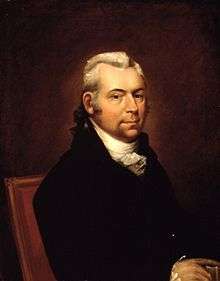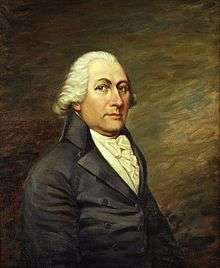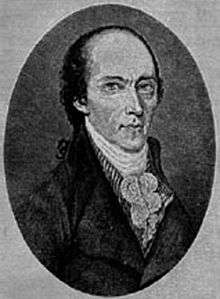United States presidential election, 1804
|
| |||||||||||||||||||||||||||||
| |||||||||||||||||||||||||||||
All 176 electoral votes of the Electoral College 89 electoral votes needed to win | |||||||||||||||||||||||||||||
|---|---|---|---|---|---|---|---|---|---|---|---|---|---|---|---|---|---|---|---|---|---|---|---|---|---|---|---|---|---|
| Turnout |
23.8%[1] | ||||||||||||||||||||||||||||
| |||||||||||||||||||||||||||||
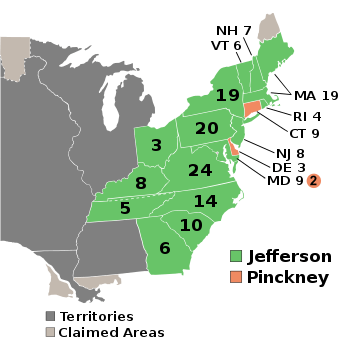 Presidential election results map. Green denotes states won by Jefferson, burnt orange denotes states won by Pinckney. Numbers indicate the number of electoral votes allotted to each state. | |||||||||||||||||||||||||||||
| |||||||||||||||||||||||||||||
The United States presidential election of 1804 was the fifth quadrennial presidential election, held from Friday, November 2, to Wednesday, December 5, 1804. Incumbent Democratic-Republican President Thomas Jefferson defeated Federalist Charles Cotesworth Pinckney of South Carolina. It was the first presidential election conducted following the ratification of the Twelfth Amendment to the United States Constitution, which reformed procedures for electing presidents and vice presidents.
Jefferson was re-nominated by his party's congressional nominating caucus without opposition, and the party nominated Governor George Clinton of New York to replace Aaron Burr as Jefferson's running mate. With former President John Adams in retirement, the Federalists turned to Pinckney, a former ambassador and Revolutionary War hero who had been Adams's running mate in the 1800 election.
Though Jefferson had only narrowly defeated Adams in 1800, he was widely popular due to the Louisiana Purchase and a strong economy. He carried almost every state, including most states in the Federalist stronghold of New England. Several states did not hold a popular vote for president, but Jefferson dominated the popular vote in the states that did. Jefferson's 45.6 percentage point victory margin in the popular vote remains the highest victory margin in a presidential election in which there were multiple major party candidates.
Background
Although the presidential election of 1800 was a close one, Jefferson steadily gained popularity during his term. American trade boomed due to the temporary suspension of hostilities during the French Revolutionary Wars in Europe, and the Louisiana Purchase was heralded as a great achievement.
Nominations
Democratic-Republican Party nomination
| Democratic-Republican Party Ticket, 1804 | |||||||||||||||||||||||||||||
| Thomas Jefferson | George Clinton | ||||||||||||||||||||||||||||
|---|---|---|---|---|---|---|---|---|---|---|---|---|---|---|---|---|---|---|---|---|---|---|---|---|---|---|---|---|---|
| for President | for Vice President | ||||||||||||||||||||||||||||
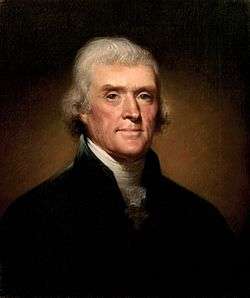 |
 | ||||||||||||||||||||||||||||
| 3rd President of the United States (1801–1809) |
1st Governor of New York (1777–1795 & 1801–1804) | ||||||||||||||||||||||||||||
| Campaign | |||||||||||||||||||||||||||||
The February 1804 Democratic-Republican congressional nominating caucus selected the ticket. Unlike the previous election, the nominating caucus did not meet in secret. Jefferson's re-nomination was never in any real doubt, with the real issue being seen as who the party would nominate to replace Vice President Aaron Burr, whose relationship with Jefferson had soured. Governor George Clinton of New York was chosen as Jefferson's running mate, continuing the party's tradition of nominating a ticket consisting of a Virginian and a New Yorker.[2]
Vice-presidential candidates
- John Breckinridge (Kentucky), U.S. Senator
- George Clinton (New York), Governor
- Gideon Granger (Connecticut), Postmaster General
- John Langdon (New Hampshire), former U.S. Senator
- Levi Lincoln (Massachusetts), U.S. Attorney General
- William Maclay (Pennsylvania), former U.S. Senator
Balloting
| Presidential ballot | Total | Vice-presidential ballot | Total |
|---|---|---|---|
| Thomas Jefferson | 108 | George Clinton | 67 |
| John Breckinridge | 20 | ||
| Levi Lincoln | 9 | ||
| John Langdon | 7 | ||
| Gideon Granger | 4 | ||
| William Maclay | 1 |
Federalist Party nomination
| Federalist Party Ticket, 1804 | |||||||||||||||||||||||||||||
| Charles C. Pinckney | Rufus King | ||||||||||||||||||||||||||||
|---|---|---|---|---|---|---|---|---|---|---|---|---|---|---|---|---|---|---|---|---|---|---|---|---|---|---|---|---|---|
| for President | for Vice President | ||||||||||||||||||||||||||||
 |
|||||||||||||||||||||||||||||
| Former U.S. Minister to France (1796–1797) |
Former U.S. Minister to Great Britain (1796–1803) | ||||||||||||||||||||||||||||
| Campaign | |||||||||||||||||||||||||||||
The Federalists did not hold a nominating caucus, but Federalist Congressional leaders informally agreed to nominate a ticket of consisting of Charles Cotesworth Pinckney of South Carolina and former Senator Rufus King of New York.[2] Pinckney's public service during and after the American Revolutionary War had won him national stature, and Federalists hoped that Pinckney would win some Southern votes away from Jefferson, who had dominated the Southern vote in the previous election.[3]
General election
Federalist leader Alexander Hamilton's death in July 1804 following the Burr–Hamilton duel destroyed whatever hope the Federalists had of defeating the popular Jefferson. Leaderless and disorganized, the Federalists failed to attract much support outside of New England. The Federalists attacked the Louisiana Purchase as unconstitutional, criticized Jefferson's gunboat navy, and alleged that Jefferson had fathered children with his slave, Sally Hemings, but the party failed to galvanize opposition to Jefferson. Jefferson's policies of expansionism and reduced government spending were widely popular. Jefferson was aided by an effective Democratic-Republican party organization, which had continued to develop since 1800, especially in the Federalist stronghold of New England.[2]
Jefferson's victory was overwhelming, and he even won most of the states in New England. Pinckney won only two states, Connecticut and Delaware. This was the first election where the Democratic-Republicans won in Maryland, Massachusetts, New Hampshire, and Rhode Island. This was the last time that Massachusetts voted for the Democratic-Republicans until 1820, and the last time that New Hampshire and Rhode Island voted for the Democratic-Republicans until 1816.
Results

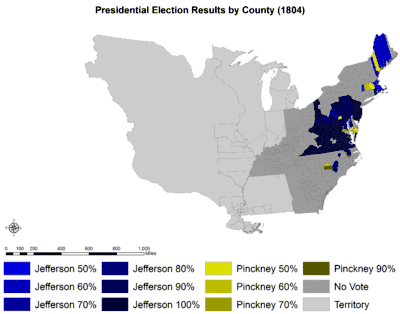
| Presidential candidate | Party | Home state | Popular vote(a), (b) | Electoral vote |
Running mate | |||
|---|---|---|---|---|---|---|---|---|
| Count | Percentage | Vice-presidential candidate | Home state | Electoral vote | ||||
| Thomas Jefferson (Incumbent) | Democratic-Republican | Virginia | 104,110 | 72.8% | 162 | George Clinton | New York | 162 |
| Charles C. Pinckney | Federalist | South Carolina | 38,919 | 27.2% | 14 | Rufus King | New York | 14 |
| Total | 143,029 | 100% | 176 | 176 | ||||
| Needed to win | 89 | 89 | ||||||
Source (popular vote): U.S. President National Vote. Our Campaigns. (February 10, 2006).
Source (Popular Vote): A New Nation Votes: American Election Returns 1787-1825[4]
Source (electoral vote): "Electoral College Box Scores 1789–1996". National Archives and Records Administration. Retrieved July 30, 2005.
(a) Only 11 of the 17 states chose electors by popular vote.
(b) Those states that did choose electors by popular vote had widely varying restrictions on suffrage via property requirements.
Electoral college selection
| Method of choosing electors | State(s) |
|---|---|
| Each elector appointed by state legislature | Connecticut Delaware Georgia New York South Carolina Vermont |
| Each elector chosen by voters statewide | New Hampshire New Jersey Ohio Pennsylvania Rhode Island Virginia |
| State is divided into electoral districts, with one elector chosen per district by the voters of that district | Kentucky Maryland North Carolina Tennessee |
|
Massachusetts |
See also
References
- ↑ "National General Election VEP Turnout Rates, 1789-Present". United States Election Project. CQ Press.
- 1 2 3 Deskins, Donald Richard; Walton, Hanes; Puckett, Sherman (2010). Presidential Elections, 1789-2008: County, State, and National Mapping of Election Data. University of Michigan Press. pp. 41–42.
- ↑ Zahniser, Marvin (1967). Charles Cotesworth Pinckney: Founding Father. University of North Carolina Press. pp. 243–246.
- ↑ http://elections.lib.tufts.edu/catalog?commit=Limit&f%5Belection_type_sim%5D%5B%5D=General&f%5Boffice_id_ssim%5D%5B%5D=ON056&page=2&q=1820&range%5Bdate_sim%5D%5Bbegin%5D=1820&range%5Bdate_sim%5D%5Bend%5D=1820&search_field=all_fields&utf8=%E2%9C%93
- "A Historical Analysis of the Electoral College". The Green Papers. Retrieved March 20, 2005.
- A New Nation Votes: American Election Returns 1787-1825
- Presidential Election of 1804: A Resource Guide from the Library of Congress
External links
| Wikimedia Commons has media related to United States presidential election, 1804. |

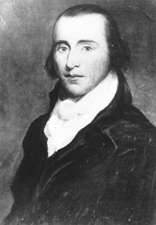
.jpg)
